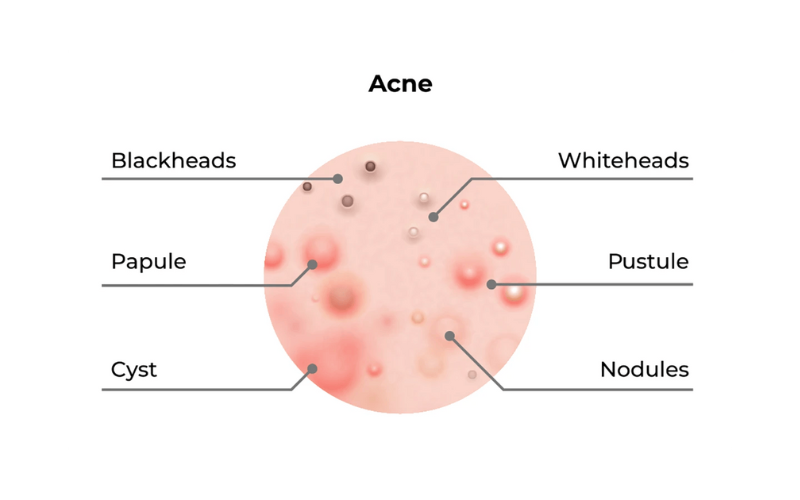Uncover why clearing your skin isn’t always as simple as clearing a prescription, and how acne medications work (or not) with your body’s unique chemistry.
{{ vm.tagsGroup }}
11 Aug 2025
5 Min Read
Preevena Devi (Contributing Writer)
Uncover why clearing your skin isn’t always as simple as clearing a prescription, and how acne medications work (or not) with your body’s unique chemistry.
Picture this: a TikTok creator holds up a tiny blister pack of pills, swearing they ‘got rid of my acne in a month.’ The comments section floods with ‘Where can I buy it?’, ‘How much?’, and ‘Does it work for oily skin?’—yet no one mentions potential side effects, proper dosage, or that it’s prescription-only. It’s the kind of viral success story that makes medication look like a picture-perfect fix, glossing over the how and why it works.
But here’s the thing: acne medication is grounded in science (pharmacology, to be exact), not sorcery. Every pill, capsule, or cream is formulated to target specific biological processes, and no single formulation can address every type of acne. Effective treatment usually requires a personalised plan, tailored not just to the skin concern, but also to your body’s unique chemistry. To see why, let’s start with what acne really is.
Acne is a chronic, inflammatory skin condition that affects the oil (sebaceous) glands and hair follicles. It starts when excess oil (sebum) and shed skin cells clog a pore, forming a plug (comedo). That plugged pore can trap and encourage the growth of bacteria (Cutibacterium acnes), which triggers inflammation. Hormones, genetics, and even stress can increase oil production or alter the rate at which skin cells shed, making flare-ups more likely.
Photo credit: Aurora Health Care
Acne appears in different forms depending on how inflamed the pore becomes. Non-inflammatory lesions are blackheads and whiteheads (open and closed comedones). When inflammation sets in, red bumps called papules, pus-filled pustules, or deep-seated nodules or cysts may develop. These inflammatory lesions tend to be tender and can leave scars.
Mild breakouts often improve with good hygiene and over-the-counter products that clear pores or reduce oil. But, moderate to severe cases—widespread, persistent, and sometimes painful—usually require medical treatment to target the underlying processes. That’s why matching the right medication to the specific type and cause of acne is so important.
As you can see, acne isn’t one-size-fits-all—and neither are the medications used to treat it. Each targets a specific part of the problem: controlling oil, fighting bacteria, calming inflammation, or balancing hormones. Understanding how these treatments work shows why a tailored approach is key to clearing your skin effectively and safely.
Antibiotics like doxycycline and minocycline lower the levels of Cutibacterium acnes bacteria on the skin and calm the inflammation that causes redness and swelling. They’re usually prescribed for a short term because long-term use can contribute to antibiotic resistance and disrupt the body’s natural microbiome—the community of helpful bacteria living on and in us!
Hormonal medications, including contraceptives and spironolactone, are used to manage acne linked to hormonal changes, such as those during menstrual cycles or conditions like polycystic ovary syndrome (PCOS). These medications regulate androgen levels, reducing the overproduction of oil that can clog pores.
Isotretinoin, a retinoid medication better known by its brand name Accutane, is one of the strongest acne treatments available. It’s usually reserved for severe acne that doesn’t respond to other treatments. Isotretinoin targets all four main causes of acne: excess oil, clogged pores, bacterial overgrowth, and inflammation. Because of its potency and potential side effects—on liver function, cholesterol, and mood—patients taking isotretinoin require close medical supervision.
Not all acne medications work the same for everyone. A person’s unique biochemistry—from hormone levels and enzyme activity to liver metabolism and immune response—can affect how well a treatment works. For example, if bacteria aren’t a major factor in the acne, antibiotics may have limited benefits. Similarly, hormonal medications may not be effective if hormone levels are already balanced. That’s why personalised treatment plans, drawn up with a qualified dermatologist, are essential.
Acne medications can do a lot, but they need a bit of strategy and a bit more time. Most treatments don’t clear skin overnight, so expect to wait weeks—or even months—before seeing real change. Many people notice some improvement in 4–6 weeks, but lasting improvements often take 8–12 weeks or longer. Stick with your plan; stopping too soon is one of the most common reasons acne returns!
Here are a few practical tips to keep in mind:
At the end of the day, acne treatment is deeply personal. What clears one person’s skin may do little for another because our bodies—hormones, skin type, genetics, and immune response—all play a part. Working with a qualified dermatologist or healthcare professional usually leads to safer, more effective, and more sustainable results than chasing viral trends seen once on TikTok. Your skin is complex; take the time to understand it and choose treatments that actually work for you—it deserves nothing less!
Preevena Devi pursued Cambridge A Level at Taylor's College before attending Monash University. She is a biomedical science student, a passionate feminist, and a firm believer in the transformative power of the written word to change the world!
